Weight Male AKC FSS Life span 10 – 11 years | Coat Tan Leather Mass Male: 50 – 90 kg (Adult) | |
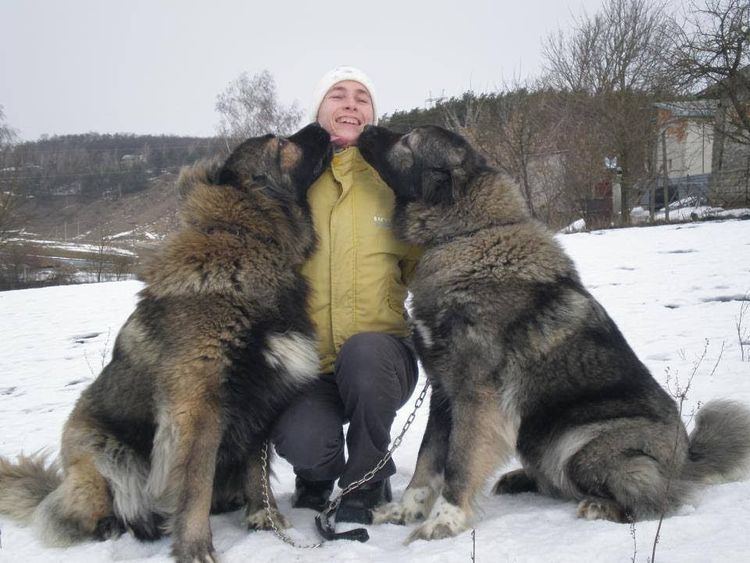 | ||
Other names Azerbaijani Shepherd DogCaucasian OvcharkaGeorgian NagaziCaucasian Mountain DogCircassian Sheep DogArmenian Khobun DogKars (Kafkas) Köpeği Colour Any solid colour, piebald or spotted colour, except black and sliver. FCI Group 2, Section 2.2 Molossian: Mountain type #328 Height Female: 67 – 70 cm (Adult) Temperament Alert, Quick, Strong, Calm, Powerful, Dominant Colors Black, White, Rust, Grey, Fawn, Cream Similar Central Asian Shepherd, German Shepherd, Kangal dog, St Bernard, Rottweiler | ||
The magnificent breed of caucasian shepherd dog documentary in hd
The Caucasian Shepherd Dog (Adyghe: Хьапарий, Hapariy, Karachay-Balkar: Парий, Pariy, Armenian: Կովկասյան հովվաշուն "Kovkasyan hovvashun", Azerbaijani: Qafqaz çoban iti, Georgian: ნაგაზი "Kavkasiuri nagazi", Turkish: Kafkas Çoban Köpeği, Ossetian: Аргъонахъ Arghonaq, Russian: Кавказская овчарка Kavkazskaya Ovcharka) is a large breed of dog that is popular in Russia, Armenia, Azerbaijan, Georgia, and North Caucasus area.
Contents
- The magnificent breed of caucasian shepherd dog documentary in hd
- Appearance
- Health
- Training
- Breed structure
- History
- Recent history
- References
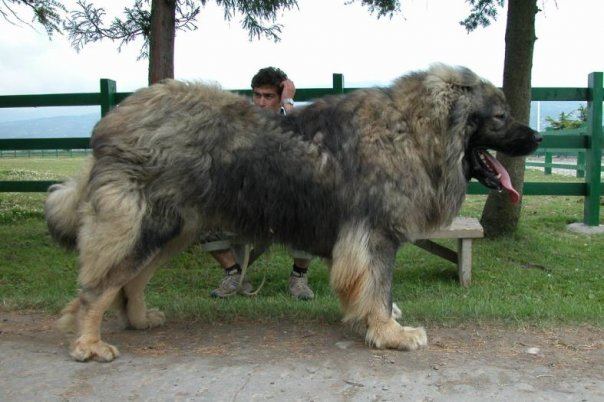
It is extremely popular in Georgia, which has always been the principal region of penetration of the Caucasian shepherd dogs, and the official standard of this breed is fundamentally based on the Georgian-type Caucasian shepherds for being the largest, muscularly built dogs with long hair.
Appearance
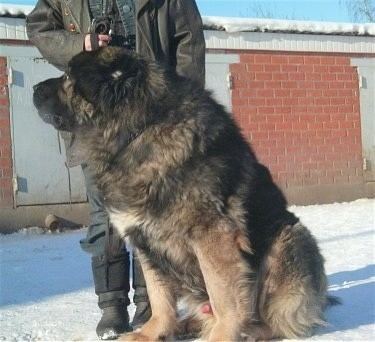
Also known as Caucasian Ovcharka or Bashan (Karachay) pariy, Caucasian shepherd dogs are strongly-boned, muscular, and even-tempered molossers. Plain dogs have a shorter coat and appear taller as they are more lightly built. Mountain dog types have a heavier coat and are more muscularly built. Caucasian shepherds are large dogs; however, there is no recorded maximum height or weight. The minimum height for females is 64 centimetres (25 in), with a desirable height between 67 and 70 centimetres (26 and 28 in).
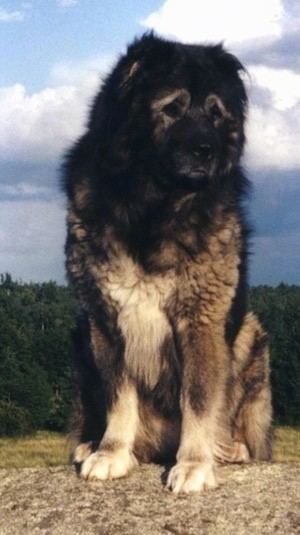
The minimum weight for females is 45 kilograms (99 lb). The minimum height for males is 68 centimetres (27 in), with a desirable height between 72 and 75 centimetres (28 and 30 in). The minimum weight for males is 50 kilograms (110 lb). The Caucasian shepherd is rather intelligent; however, they can be insolent and refuse to listen at times. They also can be fairly aggressive towards people they do not know and with incorrect handling this can be problematic. This can be overcome by proper training.
Health
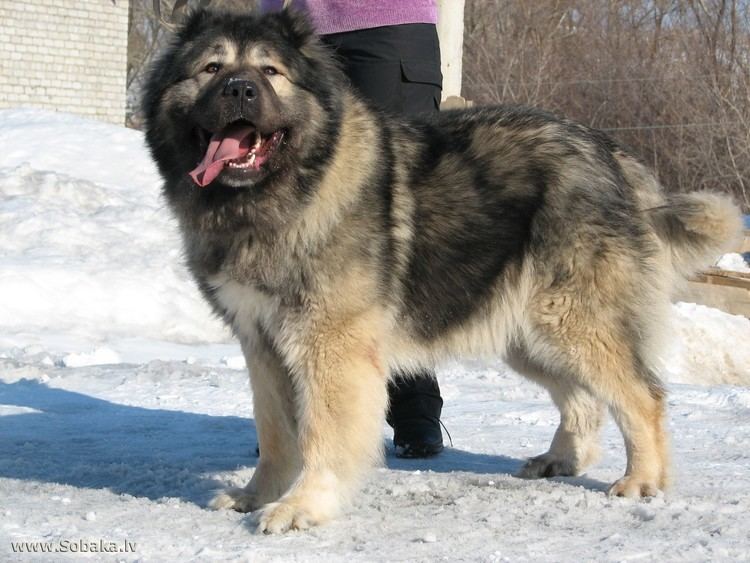
The Caucasian Shepherd Dog is generally healthy and long-lived, averaging a life span of 10–12 years. Some dogs may have health issues in the form of hip dysplasia, obesity and occasional heart problems, but the majority of these dogs are healthy if taken care of correctly. Good dog breeders use genetic testing of their breeding stock to reduce the chances of diseases in the puppies.
The ears of the Caucasian Shepherd Dog are traditionally cropped, although some modern dogs are unaltered, as many people believe that this practice is unethical and cruel. If brought up by someone with extensive knowledge on the needs of a Caucasian Shepherd Dog, the chances of health problems should lower dramatically.
Exercise and play time are a crucial part of the Caucasian Shepherd dogs life to help prevent obesity. Outdoor activities such as hiking, chasing balls and retrieving flying discs can be a good outlet of releasing energy.
Training
Caucasian Shepherd Dogs require very specific and detailed training. From the ages of 0–9 months the obedience of the dog has already been formed. It is recommended that an expert begins to train the dog from the ages of 7–8 months old. The training that is involved in this early stage should be light guidance on the teaching of obedience.
Puppy school has been described as a bad option for the Caucasian Shepherd dog. They don’t tolerate other dogs very well and get out of control easily. This can be difficult to manage even if they are still young. After the early stages and training of a Caucasian Shepherd Dogs life, they can move on to learn about how to herd different types of livestock and defend them if the situation arises.
It is important to expose the dog to extensive amounts of socialization to teach it that not all humans are enemies, starting this routine from a young age could be helpful. Caucasian Shepherd Dogs are not recommended to be adopted into families with young children because of their guardian instinct and powerful bodies.
Breed structure
History
The Caucasus mountains are home to some of the oldest living Molosser breeds, the Caucasian Mountain Dogs. There is a great variety of types among the Caucasian dogs depending on their home region, but a single type has come to be favored in the show rings and literature, at the expense of other breed variants.
Although its first official Show-Ring appearance outside the Caucasus was in the 1930s in Germany, the Caucasian Mountain Dog has existed since ancient times, like many Eastern Molossers. They served shepherds in the Caucasus mountains as guard dogs, defending sheep from predators, mainly wolves, jackals and bears. They are still successfully served in this job, especially in Georgia, and the shepherds life is impossible without these dogs. The show dogs, also known as Caucasian Ovcharka, were created by the USSR during the 1900s using the dogs taken mainly from Georgia. Now, Caucasian shepherd dog is a fully standardized breed recognized by the major kennel organizations, including FCI, AKC and UKC.
Recent history
A short haired breed of this dog with a very aggressive attitude towards any one who is not the care taker of the animal exists in Iran. Normally black or black and yellow color, it is called a "sage gorgy" (Wolf dog). This dog is used for home protection, farm animal protection, and other efforts. This dog is often kept as a solitary dog because of its aggressive temper.
As mentioned above, the modern working Caucasian dogs have established a civilisation in Georgia. Historically, the Caucasian Molossers were used for centuries to protect properties, guard livestock, and kill wolves. Today, especially outside the Caucasus, they are widely employed as companion animals and watchdogs, while in their native Caucasus they are still protecting sheep as well. Most prized as a property guardian, the Caucasian shepherds are good protectors.
The Caucasian Mountain Dog is a low activity dog, seemingly lethargic when not working, but agile and convincing when it feels its family is threatened. Although certain strains are more vicious than others, all Caucasians are very territorial and dog-aggressive, needing early and careful broad socialization, as well as firm, but never forceful, handling. This breed can be a family dog, if well trained and socialized.
